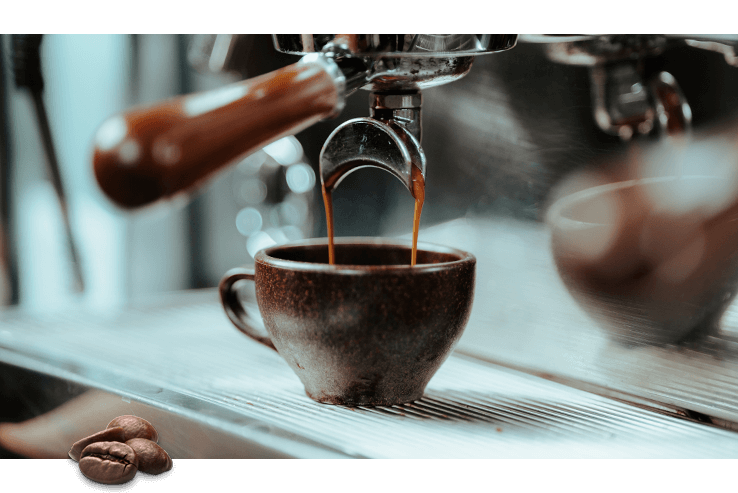A First-Time User’s Guide to Understanding SOE Single Origin Espresso
A First-Time User’s Guide to Understanding SOE Single Origin Espresso
Blog Article
Checking Out the Rich Flavors of Coffee Beans: a Deep Study Espresso and Blended Coffee Beans
When you check out the rich tastes of coffee beans, you reveal a complicated world where each selection brings its own personality to your cup. Recognizing the origins, processing approaches, and toasting strategies can transform your coffee experience. As you browse through the art of espresso and the imagination behind blended coffees, you'll start to appreciate the subtleties that make each sip unique. What you'll uncover following may change the method you appreciate your early morning brew.
The Origins of Coffee Beans: Discovering Terroir and Flavor Profiles
When you take a sip of coffee, you're not simply enjoying a drink; you're experiencing an abundant tapestry of flavors shaped by the beans' origins. Each area produces one-of-a-kind flavor accounts influenced by dirt, altitude, and environment. Beans from Ethiopia usually break with intense, fruity notes, while those from Colombia often tend to use a balanced, nutty sweet taste.
As you discover various beginnings, you'll discover just how terroir-- the environmental aspects impacting a crop-- plays a crucial duty - Single Origin Espresso. The same coffee variety can taste substantially various depending on where it's grown
When you think about these elements, you begin to value the complexity behind your cup. Each sip narrates of the land and the farmers who nurtured the beans. So, following time you indulge, think of the trip your coffee took prior to it reached your hands, and savor those elaborate flavors that mirror its beginning.
Recognizing Espresso: The Art and Science Behind the Mixture
When you consider espresso, it's not practically the solid taste; it's also about the methods that bring it to life. Recognizing exactly how various preparation approaches impact taste can change your brewing experience. Allow's check out the ins and outs of coffee prep work and reveal the distinct taste accounts that make each cup special.
Espresso Prep Work Strategies
Coffee preparation is both a science and an art, combining exact strategies with a deep understanding of coffee. To start, you'll wish to pick premium, fresh baked beans and grind them carefully for optimal extraction (Single Origin Espresso). The work dimension is important; too rugged, and your coffee will be weak, also fine, and it'll be bitter
The outcome ought to be an abundant, velvety espresso with a beautiful layer of crema on top. With method, you'll master these techniques.
Flavor Accounts Discussed
The globe of espresso offers a rich tapestry of flavor accounts that can raise your coffee experience. When you take that first sip, you'll observe a balance of bitterness, sweetness, and level of acidity. Each espresso bean carries special notes, from flower and fruity to nutty and chocolaty. Light roasts frequently showcase brilliant level of acidity and vivid flavors, while dark roasts present deeper, bolder tones.
A well-crafted blend may integrate the intense notes of an Ethiopian bean with the rich, chocolatey undertones of a Brazilian bean. Embrace the journey of finding espresso's diverse flavors, and you'll transform your coffee ritual into an interesting experience.
Handling Techniques: Just How They Influence Taste and Aroma
While it may appear that the origin of coffee beans is one of the most significant element in establishing their flavor and aroma, the handling approaches utilized post-harvest play a similarly essential function. You'll discover that these techniques can considerably change the last preference profile of your cup.
For instance, the washed procedure removes the fruit from the beans before fermentation, commonly causing a cleaner, brighter flavor. The natural process leaves the fruit undamaged throughout drying, resulting in a sweeter, fruitier profile.
Various other approaches, like honey processing, strike a balance, enabling some fruit mucilage to stay, supplying a distinct complexity.
Each processing technique engages with the beans' inherent characteristics, boosting or muting specific tastes and aromas. When you sip that espresso or mixed coffee, bear in mind that the trip from cherry to cup is affected not simply by origin yet likewise by how those beans were refined.
Roasting Strategies: Opening the Complete Prospective of Coffee Beans
Roasting methods are crucial for disclosing the full potential of coffee beans, as they transform raw, eco-friendly beans right into the fragrant, flavorful coffee you delight in. The selection of roasting approach-- light, medium, or dark-- substantially influences flavor profiles.
A slower roast at lower temperatures permits for complicated flavors to create, while a quicker roast can escalate resentment. By grasping these techniques, you'll disclose a world of flavor, boosting your coffee experience to brand-new elevations.
The Magic of Blended Coffee: Producing Distinct Taste Experiences
Developing an unique taste experience with combined coffee can transform your morning routine right into an expedition of preference. By incorporating various beans from numerous areas, you can expose a harmony of tastes that raise your mug to new elevations. Each mix offers a distinct profile, balancing body, level of acidity, and sweet taste to create something absolutely special.
When you pick a mix, you're not just picking a coffee; you're picking a journey across varied landscapes and societies. Explore various combinations enables you to uncover your personal faves, whether you enjoy fruity notes or abundant, chocolatey touches.

Tasting Notes: Acknowledging the Nuances in Your Mug
As you drink your coffee, you might notice a range of tastes dancing on your palate, each exposing the complexities of the beans. You might taste the brilliant level of acidity similar to citrus or the deep, abundant notes similar to dark delicious chocolate. The sweetness might stimulate honey or caramel, stabilizing the general account magnificently.
Take notice of the body of the coffee-- does it really feel ventilated and light, or is it full and velvety? The finish, also, uses clues; a sticking around aftertaste might mean nuttiness or floral touches.

Don't neglect to check out the unique characteristics of various beginnings, as each region passes on unique flavors - Single Origin Espresso. Ethiopian coffees often present fruity notes, while Colombian beans could display an extra rounded sweetness. By recognizing these nuances, you'll grow your admiration for each and every mug, elevating your coffee experience to brand-new elevations

Developing Techniques: Taking Full Advantage Of Taste Extraction for each Bean
When you check out the different brewing methods, you'll discover that each strategy can dramatically affect the flavor profile of your coffee. From French press to pour-over, each technique extracts various substances, enhancing or silencing particular notes. For circumstances, using a French press allows oils to stay in the mixture, producing a richer taste, while pour-over highlights quality and illumination.
Temperature level and grind size additionally play necessary roles. A coarser work functions best for chilly mixtures, while a fine work is optimal for espresso. Trying out water temperature-- in between 195 ° F and 205 ° F-- can disclose covert tastes, too.
Don't ignore soaking time; a quick extraction can cause check this site out sour notes, while over-extraction may produce anger. By changing these variables, you can optimize taste extraction and genuinely elevate your coffee experience. Appreciate the journey of uncovering what method finest matches your palate!
Regularly Asked Questions
What Is the Suitable Water Temperature Level for Developing Coffee?
The optimal water temperature level for developing coffee's between 195 ° F and 205 ° F. If you use water that's too hot, you'll over-extract flavors; as well chilly, and you will not remove sufficient. Aim for that sweet place for the very best brew!
How Does Grind Dimension Impact Coffee Taste?
Work dimension substantially influences coffee taste. Better grinds remove more oils and flavors, resulting in a bolder taste, while coarser grinds yield a lighter flavor. Changing grind size helps you accomplish your preferred coffee profile.
Are There Health And Wellness Conveniences Associated With Alcohol Consumption Coffee?

What Is the Distinction In Between Arabica and Robusta Beans?
Arabica beans are smoother and sweeter, frequently featuring fruity flavors, while robusta beans are stronger with a bitter taste and higher caffeine content. You'll discover these differences in scent and developing experience.
How Can I Store Coffee Beans for Freshness?
To keep coffee beans for quality, maintain them in an airtight container, away from light, dampness, and heat. If you only grind what you need right before brewing., you'll keep their taste longer.
Exploring the Abundant Tastes of Coffee Beans: a Deep Dive Into Espresso and Blended Coffee Beans.
When you explore the abundant tastes of coffee beans, you discover a complicated world where each variety brings its very own personality to your cup.When you take a sip of coffee, you're not just delighting in a beverage; you're experiencing a rich tapestry of flavors shaped by the beans' origins.Roasting techniques are vital for exposing the full possibility of coffee beans, as they transform raw, eco-friendly beans into the fragrant, delicious coffee you delight in.As you drink your coffee, you could discover a range of flavors dancing on your taste, each revealing the ins and outs of the beans.
Report this page